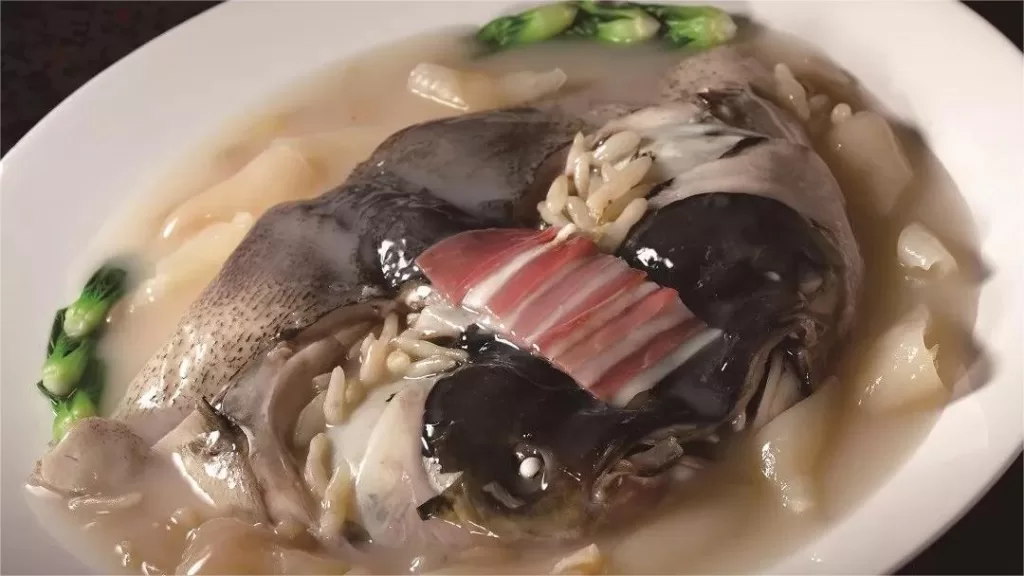Тушеная голова карпа без костей (Chai Hui Lian yu Tou)


Boneless Carp Fish Head Stew, known as 拆烩鲢鱼头 in Chinese, is a traditional delicacy originating from Zhenjiang, Jiangsu province. The dish takes its name from the meticulous process of removing the bones from the carp fish head during preparation. Renowned for its savory and salty flavor, the dish boasts a unique texture with sticky and smooth fish skin, tender and juicy fish meat, and a thick, rich, and flavorful broth. The main culinary challenge lies in the delicate task of deboning the fish head, requiring the chef to ensure that the head retains its complete and intact form.
The roots of this delectable dish intertwine with a historical tale from the late Qing Dynasty in Yangzhou, where a wealthy miser named Wei resided. This wealthy man, known for his frugality, decided to construct an embroidered tower in his backyard. Due to his notorious stinginess, local artisans were hesitant to take on the project. As the seasons changed from spring to autumn without any progress on the tower, Wei, in desperation, posted notices around the city. The notices declared his willingness to hire workers for the construction, offering free meals in addition to wages. Finally, after a long wait, Wei managed to recruit five artisans from northern Jiangsu, led by a resourceful young man named Cao Shou.
On the second day of their employment, the artisans were served three meager meals consisting of visible porridge and a small bowl of dried radishes. The lunches were particularly unpalatable, featuring coarse rice and a vegetable soup lacking in oil and salt. This uninspiring fare continued for three consecutive days, leading to the artisans becoming frustrated and suspecting that they were being taken advantage of.
Coincidentally, it was Cao Shou’s wife’s birthday, and the chef bought a large carp weighing over 10 kilograms to prepare a celebratory meal. Left with the unused fish head, Wei, considering it a waste, instructed the chef to remove the bones and cook the fish meat as a dish. The chef, after contemplating for a moment, decided to cut the fish head in half, rinse it thoroughly, and boil it in clear water. Once the flesh began separating from the bones, he removed the bones and combined the meat, adding oil, salt, green onions, ginger, and other ingredients before stewing it. The resulting dish was then presented to Cao Shou and his team.
Upon seeing the dish, the artisans were incensed, thinking they were being served leftover scraps rather than a proper fish. Filled with anger, they decided to leave the premises. Desperate to salvage the situation, Wei claimed that the dish was a renowned family specialty, boneless and thornless, with a delicious taste. To prove his point, he instructed the chef to enhance the dish by adding more seasonings and garnishes, using chicken broth for further refinement. Intrigued, the chef tasted the dish himself and found the fish meat to be tender, flavorful, and distinctive. Eventually, Cao Shou and his team, after sampling the improved dish, found it quite delightful, and their anger subsided.
This prompted the chef to conduct multiple experiments in selecting ingredients and refining the cooking process until he was satisfied. Once perfected, the dish, named Boneless Carp Fish Head Stew, was officially introduced to the public. Its popularity grew rapidly, and it soon became a celebrated specialty in Yangzhou, earning acclaim throughout Jiangsu province.